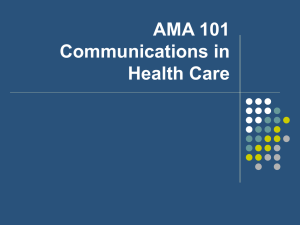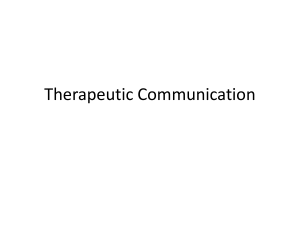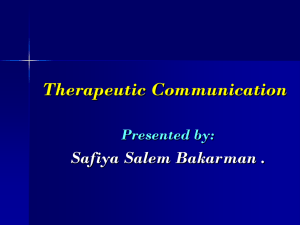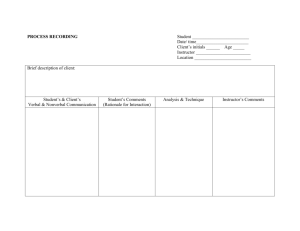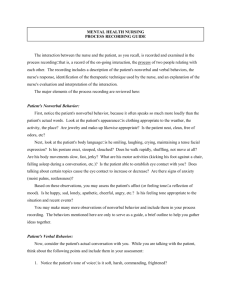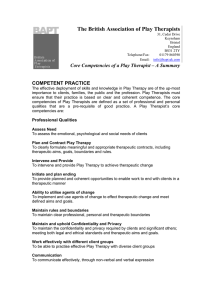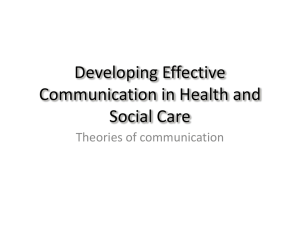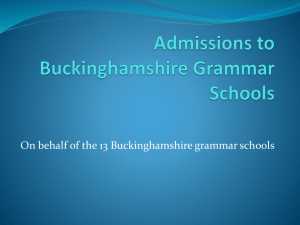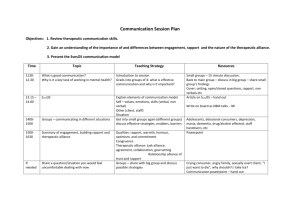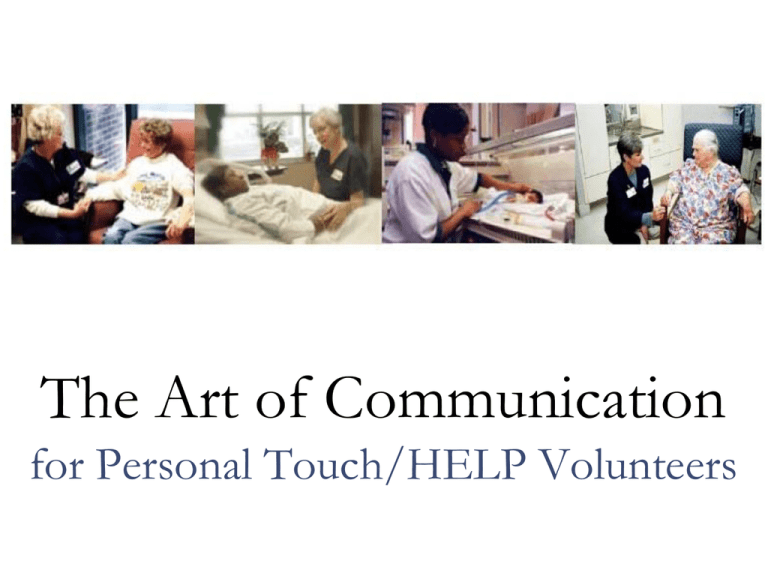
The Art of Communication
for Personal Touch/HELP Volunteers
Dr. Albert Mehrabian
Professor Emeritus of
Psychology, UCLA
•Developed a theory for face-to-face communication
Define communication
Transferring or exchanging information,
ideas, or thoughts through verbal and nonverbal communication from my brain to
your brain.
3 Ways of Communicating
Words
Vocals
Non-Verbal/Non-Vocal
Preparing to communicate – pop quiz
What's the most effective to communicate your message?
Verbal
WORDS
7%
Vocals
WHAT THEY HEAR
38%
Non-Verbal/Non-Vocals
WHAT THEY SEE
55%
The Communication Cycle
Noise
Message/
Channel
Sender
Receiver
(encodes message)
(decodes message)
Feedback/
Response
Noise
Barriers to successful communication
Verbal
Grammar
Jargon/Technical Terms
Regionalisms
Barriers to successful communication
Vocal
Volume
Pace
Tone
Barriers to successful communication
Non Verbal/Non Vocal
Facial Expressions
Personal Gestures/Body Language
Cultural Differences
Nonverbal Messages - Recap
Provide information
May be intentional or unintentional
Present in all face-to-face communications
Mean different things
May contradict verbal message
May outweigh verbal message
Depends on the total environment
May have positive or negative effects
Social versus Therapeutic Communication
Social Communication or Two-way Communications –
communication channels that provide for feedback.
Therapeutic Communication or One-way Communications
– communication channels that provide no opportunity for
feedback.
Therapeutic Communication
Sometimes called effective communication,
it is purposeful and goal-oriented, creating a
beneficial outcome for the patient/client.
Goals of Therapeutic Communication
•To
•To
•To
•To
obtain or provide information
develop trust
show caring
explore feelings
Some differences between social and
therapeutic communication :
Therapeutic
Communication
Concerned with helping the patients
(regardless of their sex, religion,
race…etc.)
Social communication
Interaction is primarily for reason of
pleasure or companionship.
Requires that at least one person in the No person is in the position of
interaction is helping the other
responsibility of helping the other.
There is the intention of dealing with
other's problem.
There is no intention of dealing with
problems.
The relationship is purposefully
The interaction is more or less social.
directed toward a therapeutic outcome.
The relationship should not include the It is up to the partners to share their
volunteer’s personal matters or
personal affairs.
problems.
Usually lasts for a limited time frame.
Unlimited.
The Golden Gift - Silence
Let the patient do the talking – YOU are the facilitator!
What “The Patient Said . . .”
Exercise Instructions
Jot down how you think YOU would
respond to “what the patient said”.
Individual Responses
1. My daughter hates me.
2. We didn’t really plan this baby.
3. Will you pray with me?
4. I wish my family and I could go on a picnic
like we did last 4th of July?
5. Please stay longer.
6. I find you very attractive.
Table Responses
1. Would you leave? I’m sick of visiting.
2. Do you know what is really wrong with me?
3. Please don’t tell anyone, but my nurse isn’t very
nice – I don’t think she likes me.
4. Why is God punishing me?
5. My family will be relieved when I die.
6. What’s wrong with the patient across the hall?
cannot not communicate.
Everything you do or say, don’t do or don’t
say communicates something.”
“You
- John Woods
Questions?

